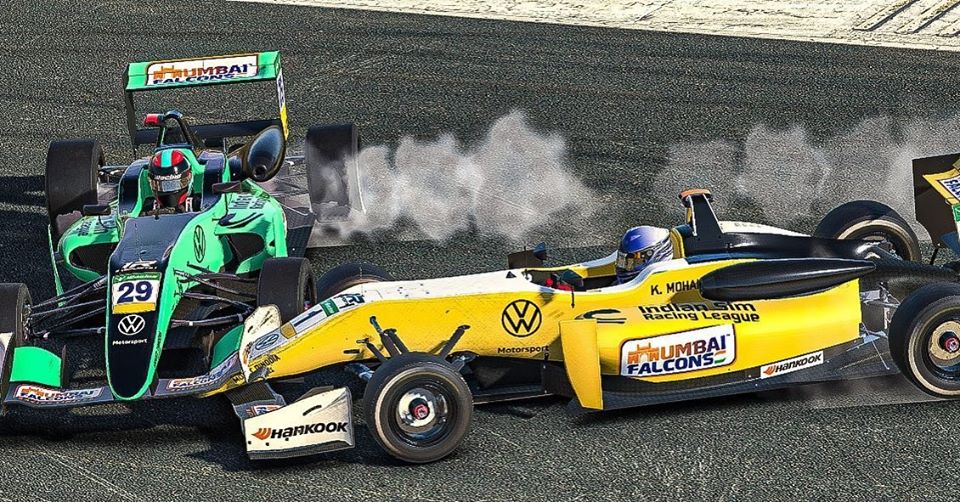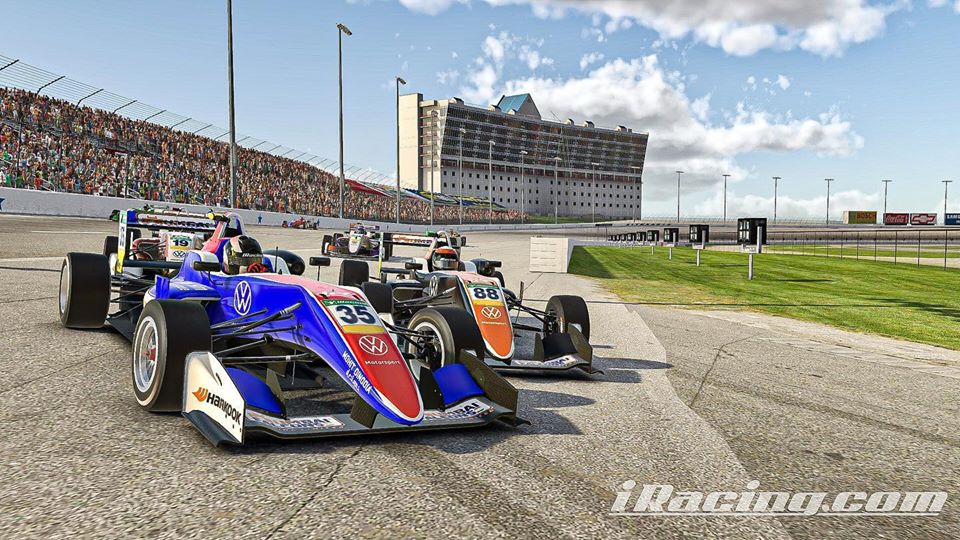Race car drivers have been honing their skills on simulators during the lockdown

First published: https://www.livemint.com/mint-lounge/features/how-simulators-have-kept-racers-sharp-in-lockdown-11591365327142.html
How simulators have kept racers sharp in lockdown
The Indian SIM Racing League is allowing race-car drivers and enthusiasts to keep in touch with the sport
In the days before the lockdown, Raiden Samervel, 12, would hop over to the racetrack in Wadala, Mumbai, on weekends and get behind the wheel of a kart, taking baby steps in the world of racing.
A promising debut followed at the Rotax Max Asia Challenge and the JK Tyre National Karting Championship last year. However, the pandemic brought everything to a halt, as it did in every sport.
Things changed again for Samervel with the start of the Indian SIM Racing League (ISRL) in April. It has allowed aspiring race-car drivers and motor-sport enthusiasts to keep in touch with the sport and practise a healthy fix of competitive racing from their homes.
The simulator-based racing series is the brainchild of Rayomand Banajee, a former national champion and founder of IR eSports, the organizers of ISRL. “We were keen on getting into eSports to make motor sport accessible to the masses. Last year, we took simulators around various colleges in Mumbai to give students a taste of it. When the lockdown happened, we decided to create something for those who owned simulators and that’s how the championship came about,” Banajee says.

The most basic simulator kit involves a steering wheel and pedals which can be hooked to a computer or console to play any racing game. It may sound like an experience straight out of a video-game parlour but it is today a popular training tool for both budding drivers as well as seasoned amateurs and professionals around the world.
“These simulators start at ₹20,000 and can go up to ₹6 lakh. And at every stage the realism gets better. For instance, in the more advanced ones, the brake pedal vibrates when you lock up on the racetrack,” says Saurav Bandyopadhyay, a driver with Volkswagen Motorsport and part of the organizing team for ISRL.
“It has been majorly responsible for my podiums and performances. Racing is an expensive sport and with a limited budget it’s not possible to be on the track as long as one would like,” he adds.
The iRacing platform features virtual racetracks that replicate prominent circuits. The uniform settings on the Formula 3 cars make it a level playing field. Every aspect—from the weather and track condition to tyre and car configuration—is kept in mind to make it as close to a real experience as possible.
“In some cases, you have to look after the tyres because if you keep pushing there’s a good chance they would be done towards the end of the race, causing the car to spin,” says Abdul Malik, 22, who finished second in season 3 of the ISRL, which concluded on 17 May.
The only thing missing is that you don’t get scared of speed, something you would experience in a real car, Banajee says.
Like most formats, the race is preceded by practice and qualifying sessions. Each round has two races—while the grid for the first is based on qualifying times, the next features a reversed grid for the top 12 places (the first driver starts in 12th position; the 12th in first) to encourage competition and learning. Though iRacing has a system built in for handing out penalties—say, in case of a jump start—ISRL officials also supervise the races to catch unsporting driving and even review protests from drivers. “It’s more aggressive as compared to opponents driven by Artificial Intelligence since these are real drivers who tend to make the same mistakes as you,” Samervel says.
Like Samervel, Sai Prithvi, 20, too was looking to drive in the Formula LGB 1300 series this year. The ISRL offered a lifeline as he continued training indoors to keep his body in shape while spending 6-8 hours on the simulator.
“It’s astonishing and scary at the same time to see how far these simulators have come. The only thing that it cannot replicate are the forces one experiences while driving a real race car. Yet there’s so much one can learn. When you line up before the start, the nerves are just the same as those on the race track,” says the winner of two of the three ISRL championships.
The inaugural season, in April, had 17 drivers, with little more than bragging rights at stake. It was so popular that Volkswagen came on board for season 2 in early May, offering a one-day testing session in their race car post the lockdown. The number of drivers jumped to 28.
The series drew another sponsor in Mumbai Falcons for season 3, with cash prizes (ranging from ₹15,000-5,000) on offer, along with the opportunity for the top 3 finishers to train and race on the track. It drew 43 drivers, forcing the organizers to create junior and senior championships, with the top 4 juniors being promoted during season 4, scheduled for the second half of June. “This way, the quality of racing is maintained and you are grooming the guys in the juniors who are relatively new,” says Bandyopadhyay, who is busy preparing for Saturday’s Nations Cup Asia, where 10 Indian drivers will be competing with 14 drivers from five other countries for a podium finish.
The incentives were reason enough for most to get their act together. Malik, who would race in the past without any practice, started spending 2-3 additional hours on the simulator each day. “I wanted the experience of driving a Volkswagen race car, so had to put in the necessary training. It was only then that I could clock the times that the top drivers were putting up,” Malik says.
While real racing requires as many hours of intense, physical training, simulation racers have it relatively easy. Yet active racers like Samerval and Prithvi continue with an indoor fitness regime. Others, like Chewang Lama, 31, have found yoga useful in maintaining temperament during a race.
A former Vento Cup driver, Lama has set up an enterprise with six simulators in Gangtok to help the next generation of motor-sport enthusiasts. “Since there is no karting track in Sikkim and a scarcity of flat land, simulators are a great way to get started. Besides, iRacing is quite real in terms of driving physics, so there’s a lot to learn. Age is really important because when you start young, you have a sharper mind, better eyesight and grasping power,” Lama says.
Though his school has been closed for the past few weeks, Samervel’s online classes take up a couple of hours each day. After that, it’s down to fine-tuning his skills on the racetrack, this time from the comfort of his living room.